5 Things to Expect at a Japanese Ryokan – Helpful Tips and Tricks Before Booking
On my recent trip to Japan, one of the non-negotiable things on my to-go list was a Japanese ryokan. I’ve heard from a variety of people that the ryokan experience is something that is unforgettable and while it is expensive, it is something you must do at least once in your life.
 I researched far and wide on which ryokan to book. And after that, I tried to learn all I could about the customs and etiquette of these Japanese ryokans. Little did I know, after all that research, I still was a bit flustered and confused during my stay (it also didn’t help that our host/guide could barely speak English). So after having gone through this experience, I want to provide you with the top 5 things to expect before arriving at a ryokan!
I researched far and wide on which ryokan to book. And after that, I tried to learn all I could about the customs and etiquette of these Japanese ryokans. Little did I know, after all that research, I still was a bit flustered and confused during my stay (it also didn’t help that our host/guide could barely speak English). So after having gone through this experience, I want to provide you with the top 5 things to expect before arriving at a ryokan!
But first, what is a ryokan? Think of it as a traditional Japanese hotel. They have their own set of traditions, etiquette, amentities, and staying at a ryokan will be unlike any other hotel experience you’ve had in the past. Ryokans are typically located in scenic areas near the mountains or by the sea, and their unique features include onsen baths (hot springs), a multi-course Kaiseki dinner (and sometimes breakfast), and a Yukata (a casual Japanese kimono) to wear during your stay. I booked a ryokan in Kyoto, but there are also some very beautiful ryokans in Hakone, a city with a fantastic view of Mt.Fuji.
1. Get to the ryokan early and have them hold your luggage
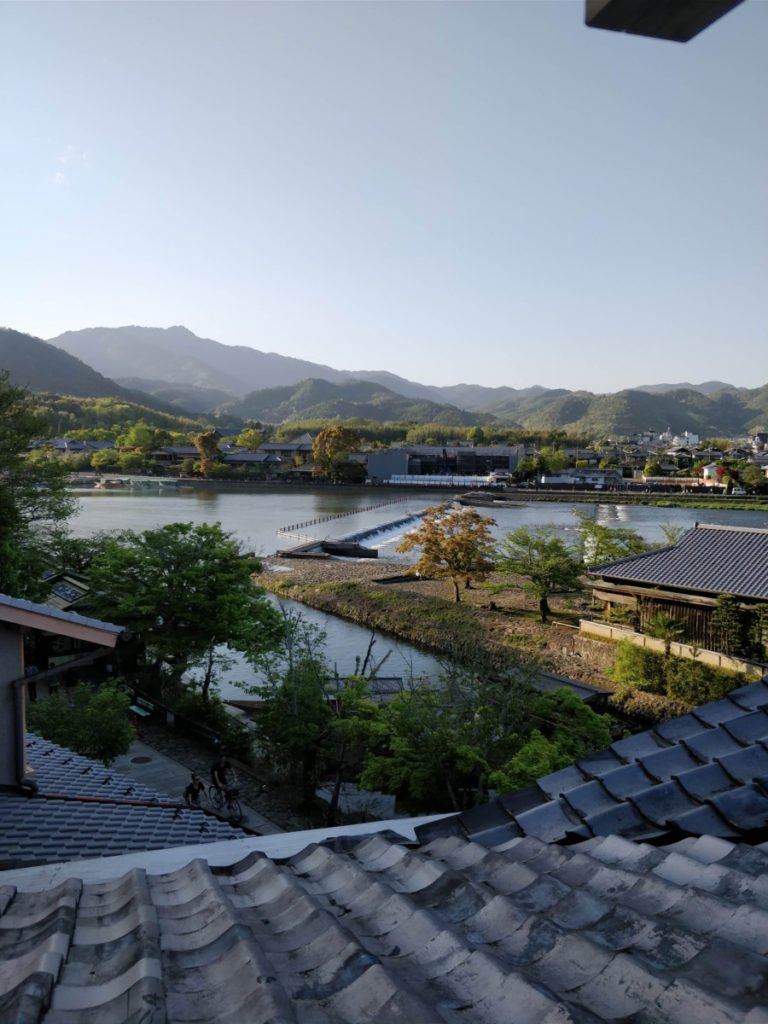 Most ryokans will not allow check-in earlier than 3 or 4pm, but will hold your luggage for you until then. I recommend getting to the ryokan as early as noon just for that reason, and explore the surrounding scenic area for a couple of hours until check-in time. Since most travelers only book ryokans for one night , it’s important to maximize your time inside the ryokan starting right at check-in time.
Most ryokans will not allow check-in earlier than 3 or 4pm, but will hold your luggage for you until then. I recommend getting to the ryokan as early as noon just for that reason, and explore the surrounding scenic area for a couple of hours until check-in time. Since most travelers only book ryokans for one night , it’s important to maximize your time inside the ryokan starting right at check-in time.
2. You will be sleeping on the floor
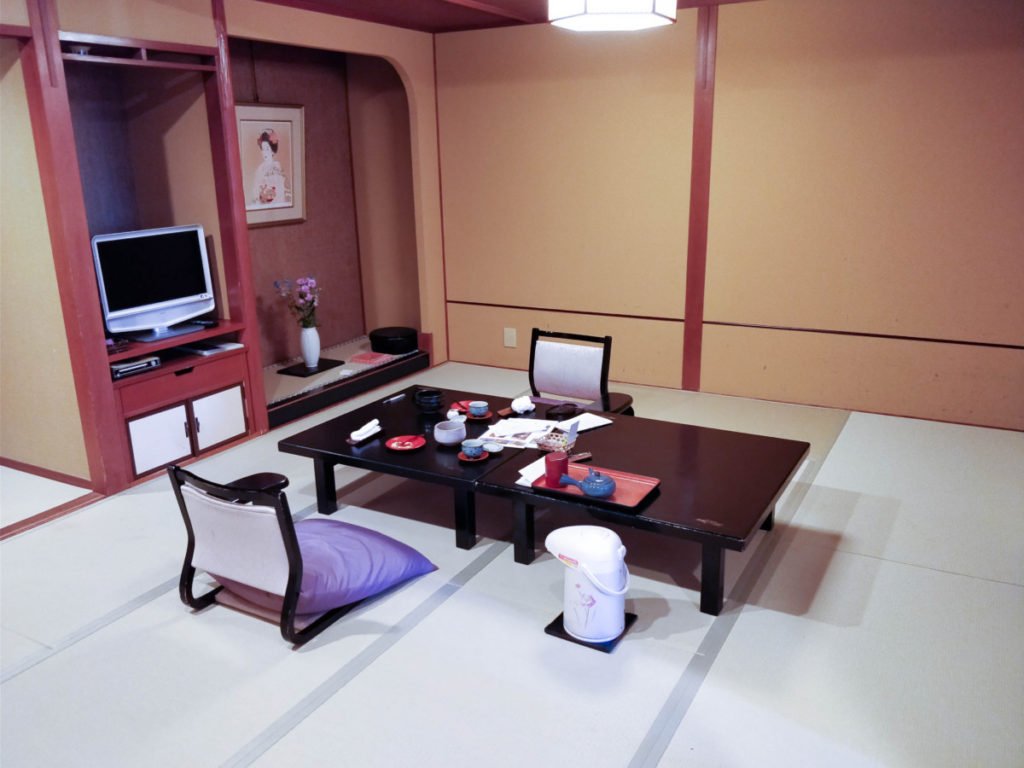 Your room will likely look something like this which involves a large dining table, two ‘chairs’, some table setting, and a huge open space. Don’t worry if you don’t see any beds! The beds are actually futons, which are kept in the closet until after dinner (they will set it up for you while you are away). The futons are placed on the floor, which means you will also be sleeping on the floor. If you have back problems, I suggest searching for ryokans that offer actual beds, as they are only a few that have these accommodating features.
Your room will likely look something like this which involves a large dining table, two ‘chairs’, some table setting, and a huge open space. Don’t worry if you don’t see any beds! The beds are actually futons, which are kept in the closet until after dinner (they will set it up for you while you are away). The futons are placed on the floor, which means you will also be sleeping on the floor. If you have back problems, I suggest searching for ryokans that offer actual beds, as they are only a few that have these accommodating features.
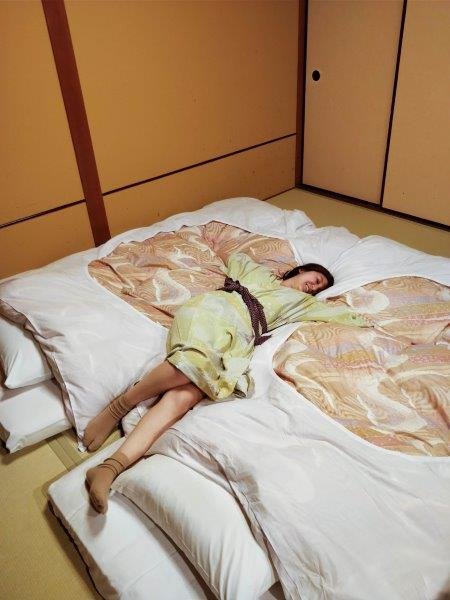 If sleeping on a floor sounds okay for you, I can assure you that these futons are incredibly soft, thick, and luxurious, so there is no need to worry about comfort!
If sleeping on a floor sounds okay for you, I can assure you that these futons are incredibly soft, thick, and luxurious, so there is no need to worry about comfort!
3. Japanese onsens (hot spring baths) require you to be completely naked
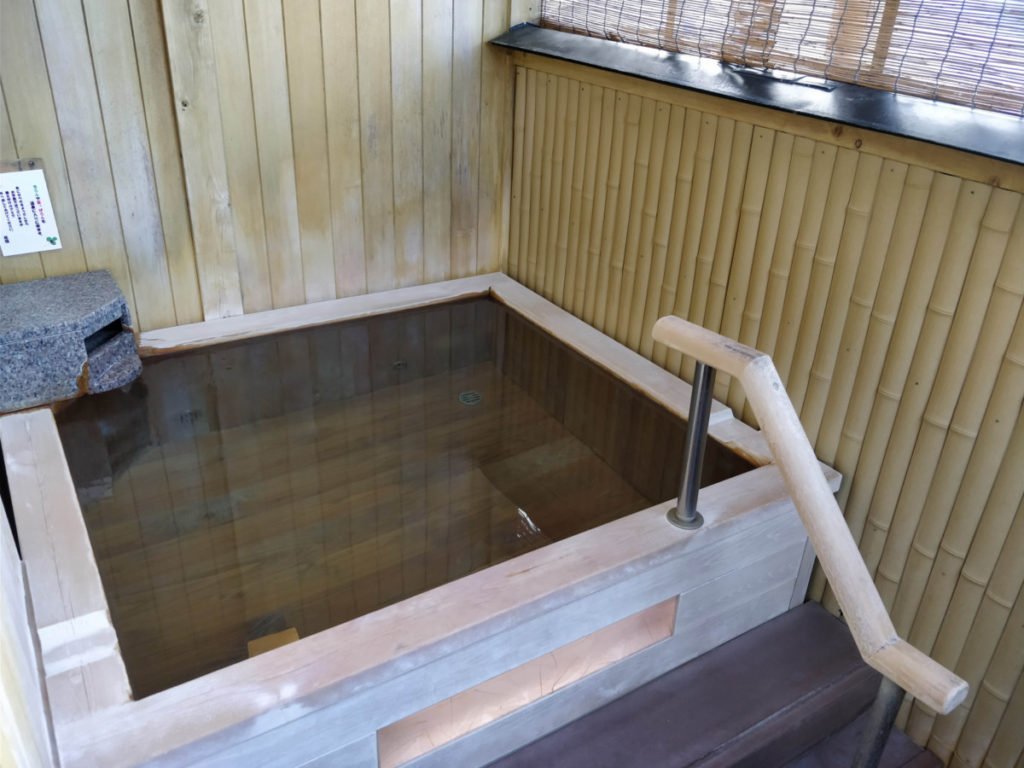 Being able to relax in onsens (hot spring baths) are one of the main reasons why people choose to stay at a ryokan. Almost every ryokan will have a few public onsens (men and female are separated) as well as a few private ones either to be booked privately by each customer, or incorporated into the deluxe rooms. I wasn’t able to book one of the rooms with a private onsen, so I opted to pay 1600 yen (roughly $20 CAD) for a private 40 minute dip in the 3rd floor onsen.
Being able to relax in onsens (hot spring baths) are one of the main reasons why people choose to stay at a ryokan. Almost every ryokan will have a few public onsens (men and female are separated) as well as a few private ones either to be booked privately by each customer, or incorporated into the deluxe rooms. I wasn’t able to book one of the rooms with a private onsen, so I opted to pay 1600 yen (roughly $20 CAD) for a private 40 minute dip in the 3rd floor onsen.
If you do decide to check out one of their public onsens, here are a few things to note:
– know in advance that you will have to be completely unclothed before entering the onsen, and it’s likely there will be other strangers with you. You can cover yourself with a mini towel that is provided at the changing room, but you cannot bring the towel with you under the water (I actually made that mistake and didn’t realize it till after).
– wash yourself before entering the onsen. This is super important! Thoroughly rinse your body in their showers and use the provided shampoos, conditioners, and body soap. It’s actually a good opportunity to just take a shower there so you don’t have to do it again after.
– not all ryokans allow tattooed persons to go into the public onsen. If you have tattoos, just make sure to double check with your ryokan before booking.
– the ryokans are really really hot. I’ve gone to quite a few spas, jjimjilbangs (Korean spas), and now onsens, and the onsen is one of the hottest baths I’ve submerged myself into. These hot spring baths are set at only one temperature and are usually so hot, you may have to get out after 5 -8 minutes. I like to get out, cool my body down with a cold shower to close out my pores, and get back into the bath for another dip.
– no taking pictures! The reason I don’t have any other pictures of the onsen besides the private one is because pictures are not allowed. It might seem like common sense but when being a tourist, sometimes you just forget and want to take pictures of everything so just do a double take before acting.
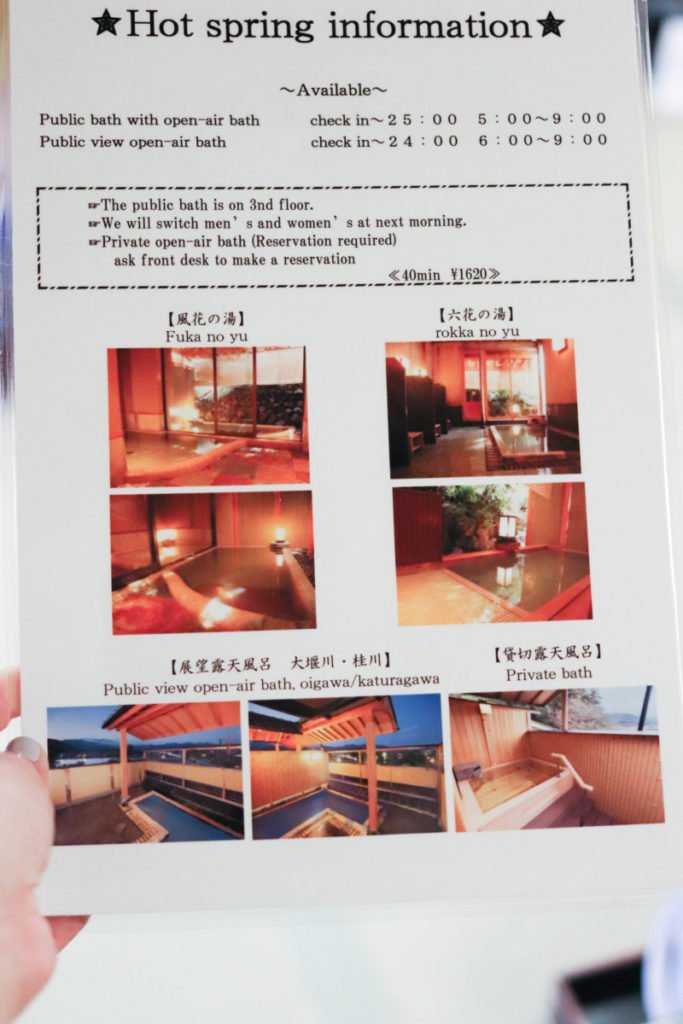
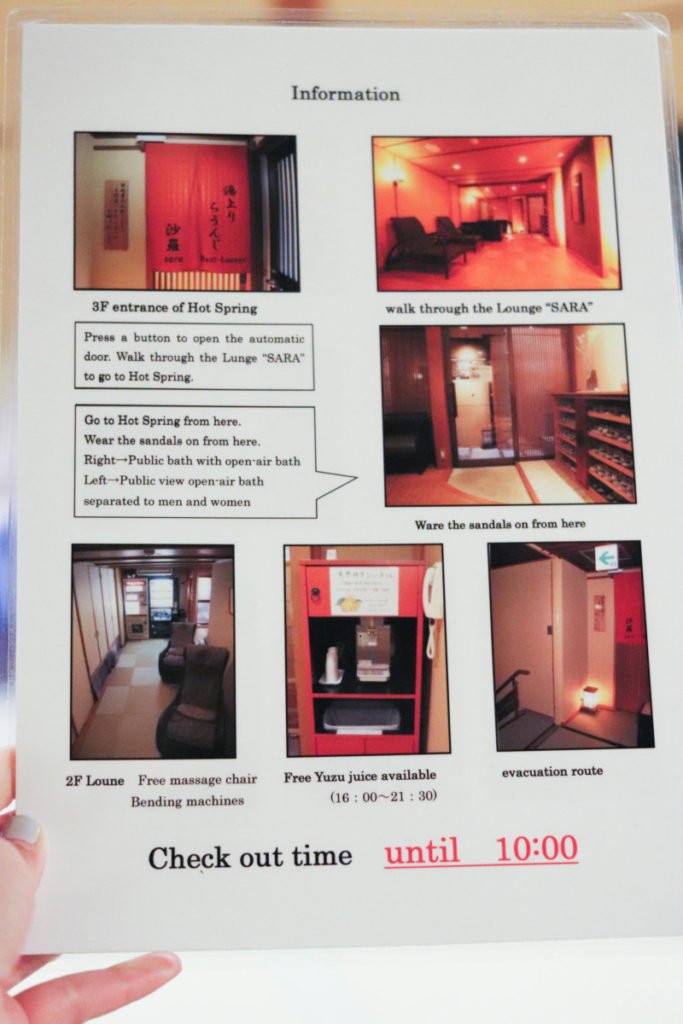
4. Prepare for a delicious, filling, multi-course dinner in your room called Kaiseki
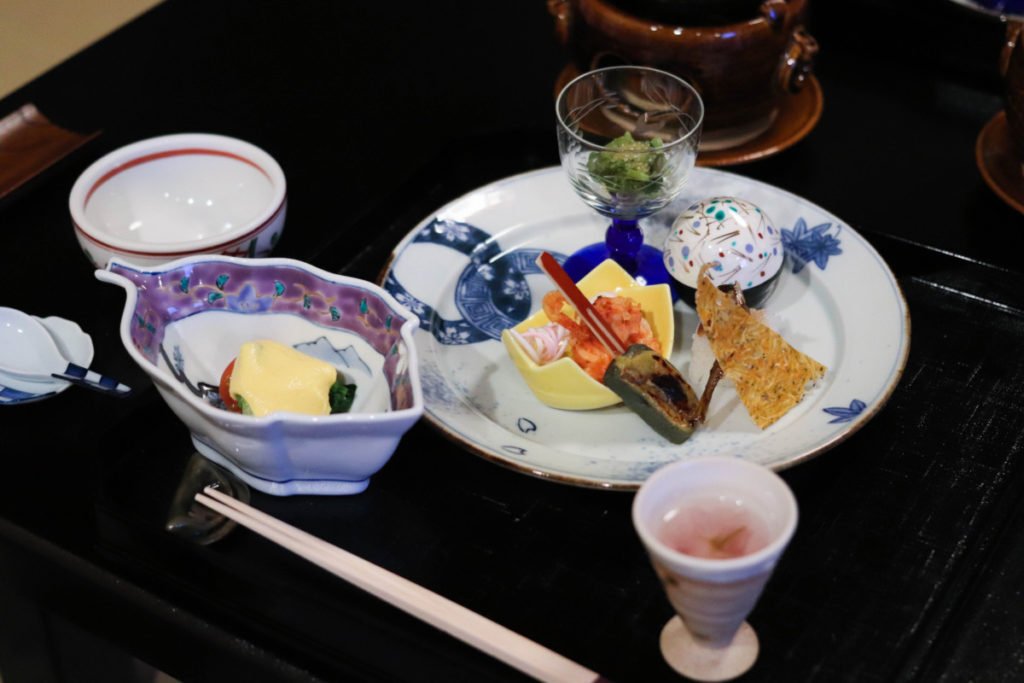 As a huge foodie, one of the reasons I wanted to book a ryokan was to experience the full Kaiseki dinner. It is a multi-course Japanese dinner that is served in sequence in your room, and consists of small and artistically plated dishes. My kaiseki dinner had over 15+ (small) dishes so be prepared for at least a 1.5-2 hour dinner. Your host will ask you for your preferred dinner time, and you are expected to be in the room 15 minutes prior to that chosen time. Do not be late! Many people choose to bath in the onsen before dinner, but it’s important to leave yourself enough time to get changed so you’re back in the room when they start prepping your dining table for your meal.
As a huge foodie, one of the reasons I wanted to book a ryokan was to experience the full Kaiseki dinner. It is a multi-course Japanese dinner that is served in sequence in your room, and consists of small and artistically plated dishes. My kaiseki dinner had over 15+ (small) dishes so be prepared for at least a 1.5-2 hour dinner. Your host will ask you for your preferred dinner time, and you are expected to be in the room 15 minutes prior to that chosen time. Do not be late! Many people choose to bath in the onsen before dinner, but it’s important to leave yourself enough time to get changed so you’re back in the room when they start prepping your dining table for your meal.
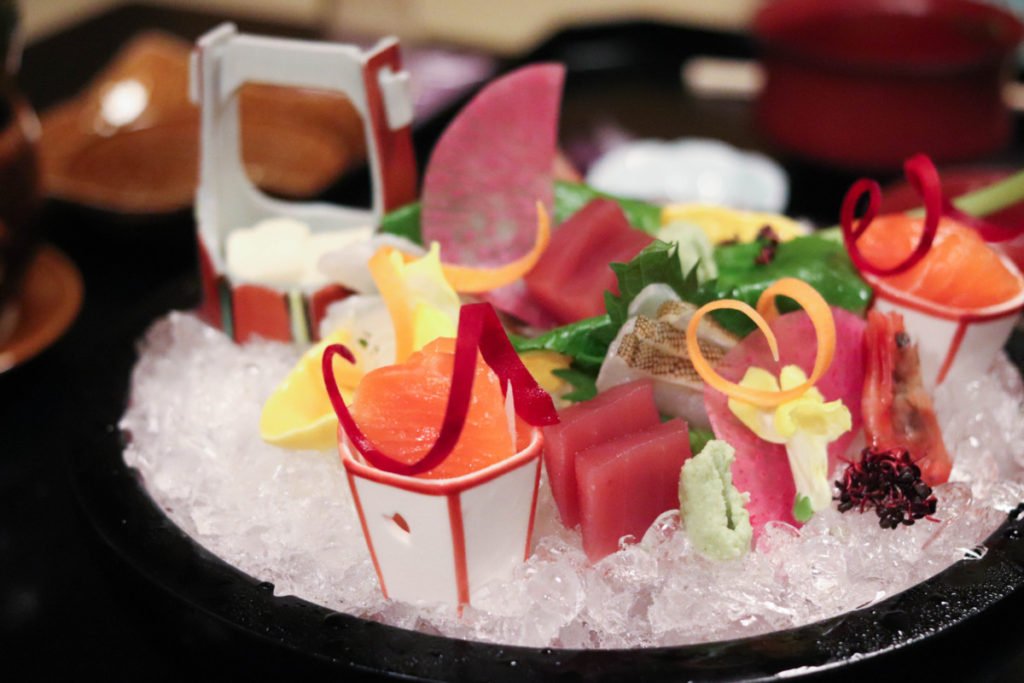 Usually you will be given a written menu at the start of the meal. If it is super important to you that they will provide one in English, do some research on Trip Advisor first before booking. My ryokan did not have an English menu so I just trusted the chef and ate whatever came my way.
Usually you will be given a written menu at the start of the meal. If it is super important to you that they will provide one in English, do some research on Trip Advisor first before booking. My ryokan did not have an English menu so I just trusted the chef and ate whatever came my way.
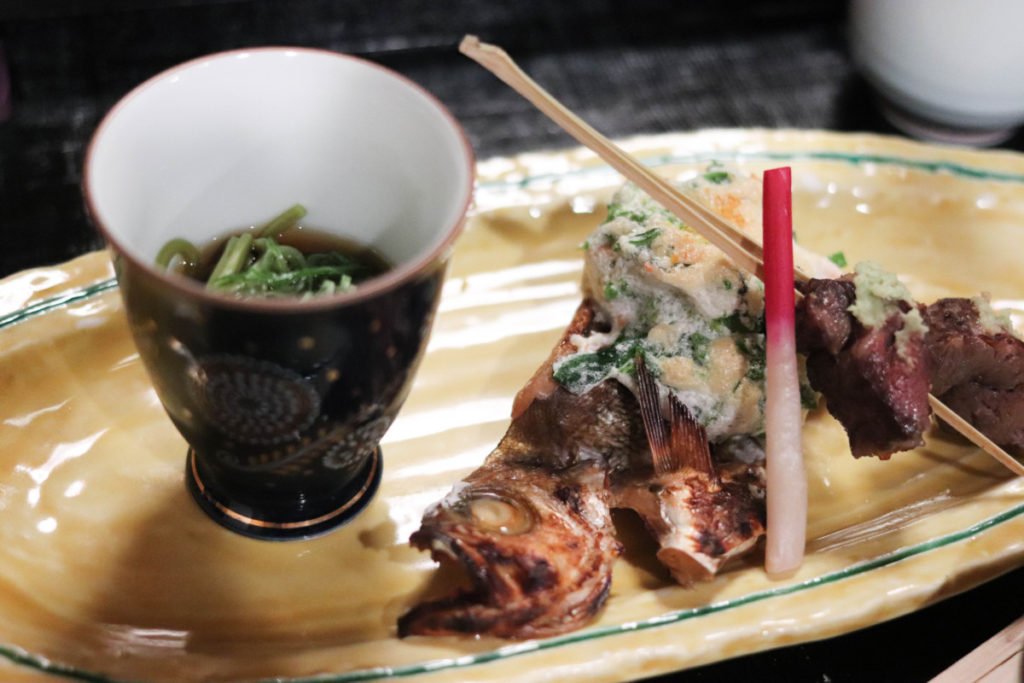 Prior to the meal, they will ask if you have any preferences or dietary restrictions, so if you’re not a fan of seafood, meat, or raw food, you can definitely let them know.
Prior to the meal, they will ask if you have any preferences or dietary restrictions, so if you’re not a fan of seafood, meat, or raw food, you can definitely let them know.
5. Your Yukata is like your PJs that can be worn inside your room and within the ryokan
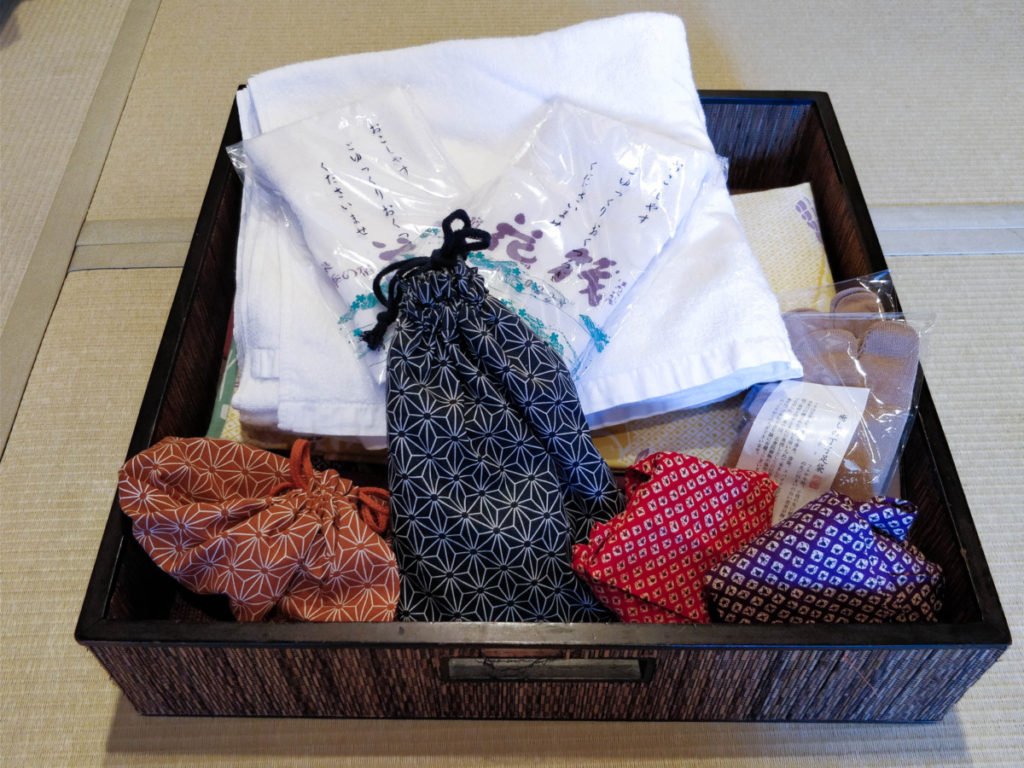 Something I wish I knew before my trip was how, and when to wear my Yukata as there were no instructions and our hosts didn’t speak English well. What I found out is that the best time to wear the Yukata is after your dip in the onsen as you are all clean and showered by then. The process that worked for me is, check-in, relax in the onsen, and change into the Yukata before dinner. Below is a video of how to wear the Yukata (watch starting 1:00).
Something I wish I knew before my trip was how, and when to wear my Yukata as there were no instructions and our hosts didn’t speak English well. What I found out is that the best time to wear the Yukata is after your dip in the onsen as you are all clean and showered by then. The process that worked for me is, check-in, relax in the onsen, and change into the Yukata before dinner. Below is a video of how to wear the Yukata (watch starting 1:00).
You don’t have to follow it precisely but just make sure you fold the right side into the body first, and then the left side.
 This was us in our Yukatas! These Yukatas can be worn to sleep, as well as to your breakfast the next morning. Mine were so comfy, that’s exactly what I did! Many other people also wore their Yukatas to the breakfast room.
This was us in our Yukatas! These Yukatas can be worn to sleep, as well as to your breakfast the next morning. Mine were so comfy, that’s exactly what I did! Many other people also wore their Yukatas to the breakfast room.
I hope you found this article helpful! If you have any questions or additional tips, please comment below and let me know. 
Happy Eating!




